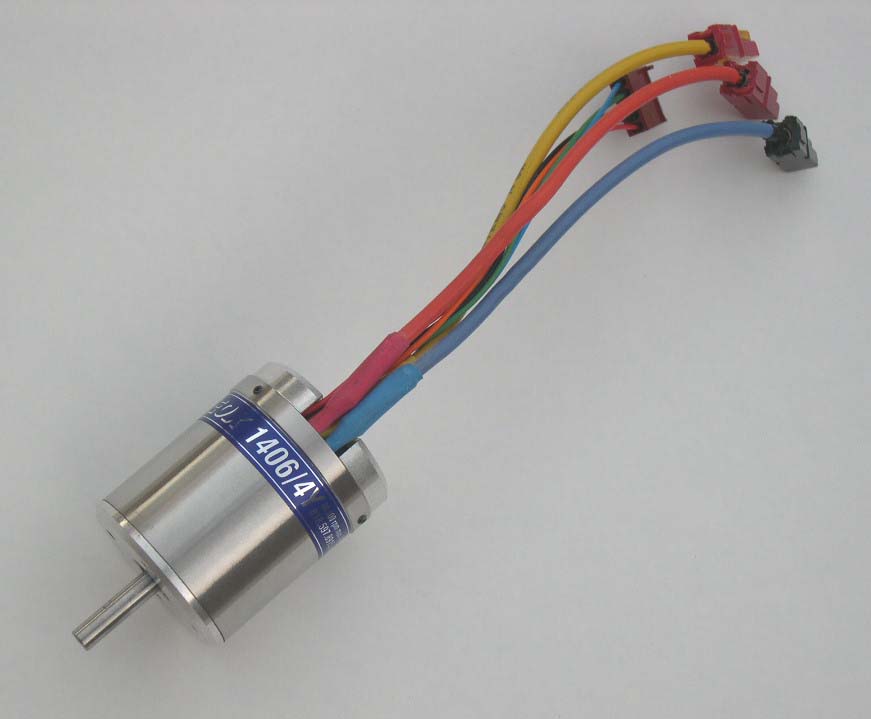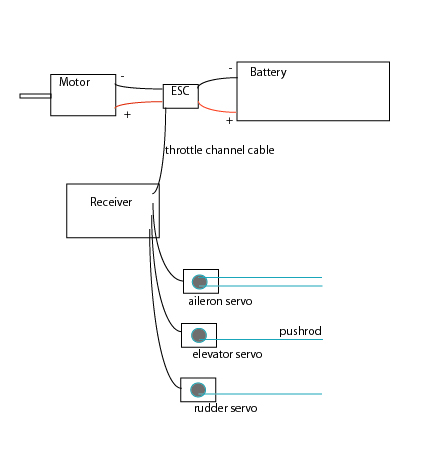Electric RC Airplanes
Electric rc airplanes are becoming more and more common, especially in models targeted at the beginning pilot. The advantages of electric power include reliability, low noise, low vibration, and lack of fuel residue (clean).The disadvantage of early systems was low power. However recent electric airplane motors, combined with advanced batteries, have increased the performance of electric rc airplanes dramatically. This type of power system is now a common sight at RC flying fields.

A brushless electric motor
[Warning: physics ahead :)] Electric motors work by converting chemical energy stored in batteries, into motion or mechanical energy.
Electrical current from the batteries flows into electromagnet coils. These are repelled by permanent magnets in the motors, causing rotational motion.
By repeatedly switching the polarities of the electromagnets, the magnets continually repel, causing smooth rotational motion. [Whew! End of physics alert.]
In the more common Brushed motors, current switching is accomplished mechanically, by means of sliding contacts known as brushes.
The contacts generate heat and can wear down over time.
In Brushless motors, the switching happens electronically using a special voltage regulator (speed controller). This second type of motor and its controller are more expensive to make.
Its advantage is no heat due to brushes, and no worn-out brushes. Brushless performance is generally higher for similar size motors, when compared to brushed. Typical electric rc motor systems would look like this:

What do ESC, BEC, and LVC mean?
Make your own Electronic Speed Controller
How do I know if my electric plane has enough power?
Electric RC Airplane Troubleshooting

